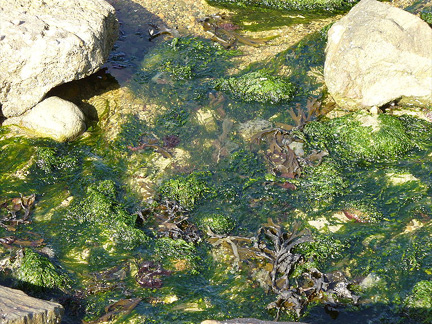France - environment
Toxicity tests on Brittany's foul-smelling seaweed
Article published on the 2009-08-14 Latest update 2009-08-14 15:30 TU

Green algae blooms in Brittany's Cote d'Armor region, where alarm over toxicity is spreading among coastal communities.
(Photo: Wikimedia Commons)
Potentially lethal fumes from the rotting weed that has washed up on shores in more than 80 communities across Brittany have worried local residents and threatened the region's lucrative tourist industry.
The national institute for environmental threats will test levels of hydrogen sulphide above the mounds of seaweed, the environment ministry said. It will also check for any other toxic components.
Green groups accuse President Nicolas Sarkozy's government of turning a blind eye to an "environmental cancer" caused by the algae and blame intensive farming for producing nitrates that feed the seaweed's toxicity.
Veterinarian Vincent Petit lost consciousness and his horse collapsed and died when they slipped on a patch of rotting algae near the beach of Saint-Michel-en-Greve on July 28.
The horse died almost instantly and Petit was pulled to safety by a crew of workers who happened to be nearby. Petit has since threatened to sue local authorities for reckless endangerment, spreading alarm in a string of coastal communities in Brittany's Cote d'Armor region.
So far this year, the town of 500 people has spent 150,000 euros on cleaning up the algae. Yvette Dore, mayor of the nearby town of Hillion, said clean-up operations had yielded in early August the same amount of green algae usually collected by the end of October.
The problem has plagued the area for more than 30 years but local leaders say more green algae has washed up this year and new territory is being invaded on the Atlantic coast.
The algae develops in shallow waters such as the wide bays in Brittany, fed by the farm chemicals seeping into the water.




